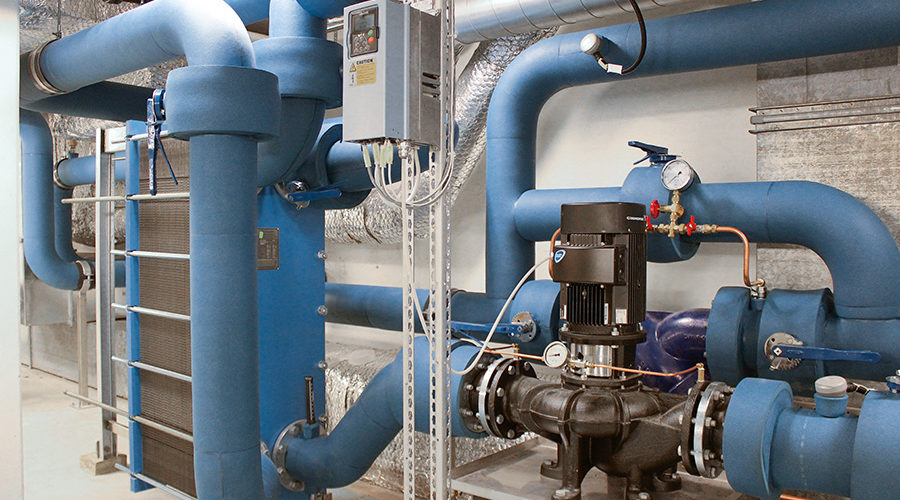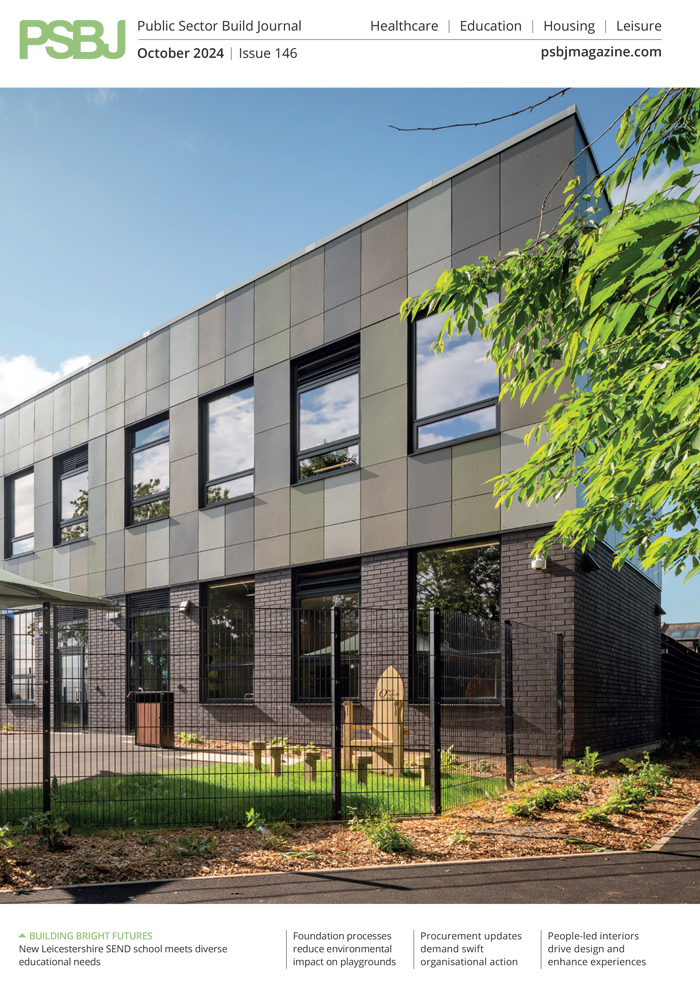Tom Merton, Technical Specialist at flexible equipment insulation material and engineered foam manufacturer, Armacell, examines the ways in which the careful selection of heating, ventilation, air conditioning and refrigeration (HVAC-R) insulation can help facilities managers in healthcare and the wider public sector to improve the fuel efficiency of their premises.
Armacell
As the cost of fuel escalates, achieving energy efficiency is one of the main challenges currently facing public sector facilities managers. In October, the research firm Cornwall Insight predicted that UK energy bills could rise by as much as 30% in 2022 if the cost of gas and electricity continue to soar.
Meanwhile, organisations throughout the UK unite to help honour the pledges made by the Government at the recent COP26 United Nations Climate Change Conference by working hard to reduce their carbon emissions. The World Bank Group estimates that healthcare facilities alone generate around 5% of global CO2 emissions annually.
Hospitals’ energy use is particularly significant, due to their large-scale, continuous operation, high quantity of equipment and the built-in redundancies required to ensure operational stability. Furthermore, as the pandemic has illustrated, hospital facilities need to be able to quickly adapt to accommodate changing requirements, such as a sudden surge in demand for beds and isolation rooms. Minimum indoor environmental quality (IEQ) standards are now considered for all spaces to enable swift flexibility.
Insulation of HVAC-R systems is one of the simplest and most effective means of saving energy in buildings of all types. The average European hospital consumes 100kWh of electrical energy per square metre, per year, and air conditioning and ventilation systems alone account for up to 40% of this consumption. We estimate that, with the right thermal insulation, operators throughout the public sector can save up to 32% of their buildings’ total heating costs.
But not all forms of HVAC-R insulation are equal when it comes to providing a reliably low level of thermal conductivity. In recent company research, conducted by the Fraunhofer Institute for Building Physics in Stuttgart, it was found that over a period of 10 years, the thermal conductivity of a closed-cell flexible elastomeric foam (FEF) insulation rose by only around 15%; over the same period, that of open-cell mineral wool rose by 77% and polyurethane (PUR) by 150%. As a result of the poor performance of mineral wool in particular, its use on refrigeration pipes is restricted in some European countries including Germany and Belgium.
Closed-cell insulation comprises millions of tightly-packed, closed air-filled cells. Each cell is bonded to those around it, creating an impenetrable barrier for air and moisture. By precluding the percolation of moisture, while maintaining its thermal performance, the material also mitigates against the corrosion of the insulated equipment. The most efficient thermal insulation solutions comprise both closed-cell pipe insulation and pipe supports, with individual components fitting together to form an integrated system.
In the public sector, the role of effective HVAC-R insulation goes further than ensuring thermal efficiency. The right insulation can help to ensure the safety of a building’s inhabitants, and nowhere is this more important than in hospitals. A safe and comfortable environment is essential for patient recovery and wellbeing, but World Health Organisation (WHO) figures show that 35% of patients develop at least one infection during their stay in hospital. Poor indoor air quality is the cause of many of these infections, with excess moisture providing an ideal breeding ground for microbial growth.
By the first week of November 2021, the Chief Executive of NHS Providers reported bed occupancy of around 95% in English hospitals, driven largely by COVID-19 admissions. As the winter advanced, this level continued to rise, as the colder weather drove up respiratory infections, exacerbated heart problems and caused an increase in accidents. As hospital wards reach full capacity, the risk of patients acquiring new infections grows.
Elsewhere in the public sector, COVID absences continue to put pressure on the workforce; it is more important than ever to take every step available to protect their health to ensure that absence is kept to a minimum and organisations may continue to function.
Within this context, facilities managers can help to protect patients and employees by ensuring that every aspect of their operations are hygienic, including their HVAC-R systems. This they can achieve by selecting HVAC-R insulation that incorporates built-in antimicrobial protection to guard against the development of the bacteria, mould and mildew that promote the spread of germs.
Once winter – and eventually too, the pandemic – is behind us, HVAC-R insulation can continue to help managers deal with year-round facilities challenges, including fire safety. In hospital and nursing facilities where many patients have restricted mobility, the threat to life in the event of fire is especially high. Managers can help to protect their buildings’ inhabitants by selecting HVAC-R insulation with the highest fire safety rating of B/BL-s1, d0 which generates only a fraction of the level of smoke created by standard elastomeric products, allowing patients and employees longer to evacuate.
Fire-proof thermal insulation for HVAC-R systems can be integrated with combined thermal insulation and fire protection barriers to seal off pipe penetrations in fire-resistant walls, ceilings and floors, to help prevent fire spreading from one room to another.
Reliable acoustic insulation is also necessary, to ensure the comfort of a building’s inhabitants, whether they be employees who need to be able to concentrate on their work, or patients, for whom a quiet, stress-free environment is vital for the healing process.
Acoustic insulation enables facilities managers to minimise the amount of sound emanating from HVAC-R systems and water pipes, and pipe supports prevent the transmission of noise created within the HVAC-R systems into the building by decoupling them from its structure.










